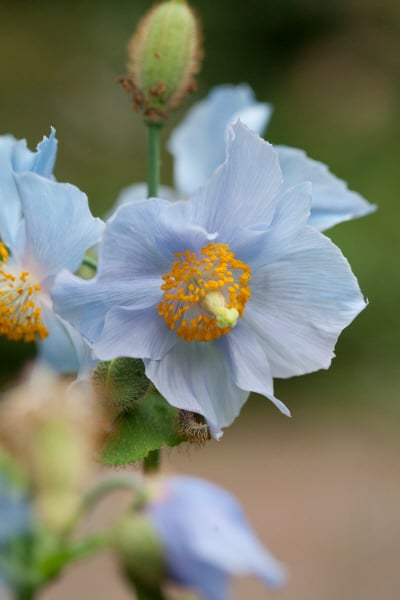Meconopsis baileyi
Bailey's Himalayan blue poppy
A short-lived, clump-forming perennial to 1.2m in height, forming a rosette of hairy, oblong leaves. Erect leafy stems bear a succession of clear blue poppies 8-10cm in width with contrasting yellow stamens and a short style

Buy this plant
Size
Ultimate height
1–1.5 metresTime to ultimate height
2–5 yearsUltimate spread
0.1–0.5 metresGrowing conditions
Moisture
Moist but well–drainedpH
Acid, NeutralColour & scent
| Stem | Flower | Foliage | Fruit | |
| Spring | Green | |||
|---|---|---|---|---|
| Summer | Blue | Green | ||
| Autumn | ||||
| Winter |
Position
- Partial shade
Aspect
West–facing or East–facing
Exposure
Sheltered Hardiness
H5Botanical details
- Family
- Papaveraceae
- Native to GB / Ireland
- No
- Foliage
- Deciduous
- Habit
- Clump forming
- Genus
Meconopsis can be annuals, biennials, evergreen or herbaceous perennials, often monocarpic, with rosettes of hairy leaves and bowl-shaped flowers that may be solitary on a leafless stem, or in racemes or panicles on a leafy stem
- Name status
Correct
- Plant range
- E Himalaya,Tibet, Myanmar
How to grow
Cultivation
Only suitable for particular sites: the soil needs to be neutral to slightly acid, moist but well-drained and enriched with leaf mould or humus to prevent stagnation; in a partially shaded site with shelter from cold, dry winds. Thrives in areas with cool damp summers
Propagation
Propagate by seed or by division after flowering but can be short-lived
Suggested planting locations and garden types
- Cottage and informal garden
- Flower borders and beds
- Underplanting of roses and shrubs
Pruning
Cut down to the base in late autumn
Pests
Diseases
May be susceptible to downy mildews
Get involved
The Royal Horticultural Society is the UK’s leading gardening charity. We aim to enrich everyone’s life through plants, and make the UK a greener and more beautiful place.